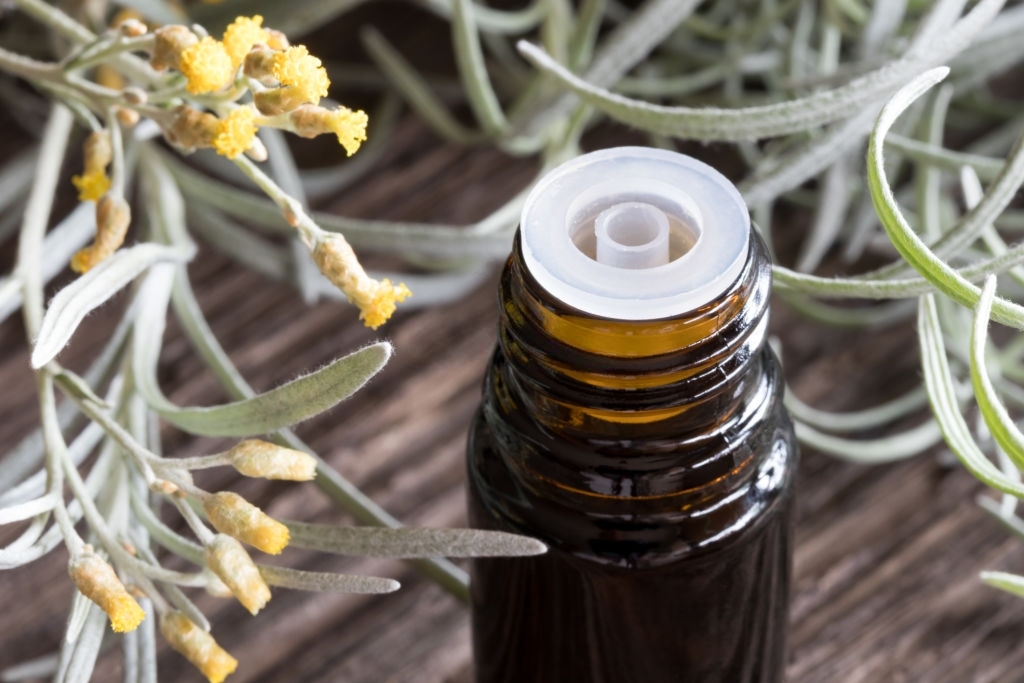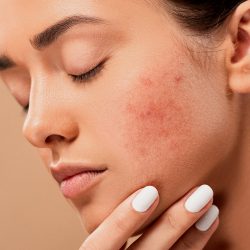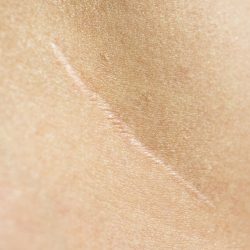Immortelle, whose botanical name is Helichrysum italicum, belongs to the Asteraceae family. Its essential oil is obtained by distilling its aerial flowering parts. Immortelle is found in Corsica in the taxon“ssp italicum” for coastal, scrubland and scree plantations. The taxon“ssp serotinum“, which is more continental, is practically non-existent in Corsica. Helichrysum italicum subsp. italicum is the Italian immortelle proper. Helichrysum italicum subsp. serotinum (DC.) P.Fourn. differs from the type species in having more ovoid flower heads and achenes without glands
History of Immortelle
The golden-yellow flowers of the Immortelle were appreciated by the Ancients, and the Greeks made it the symbol of love. It was reputed to heal warriors’ wounds and clear bronchial tubes. After falling into disuse in the last century, when it was only used to burn pigs’ bristles or make fire, and was even considered invasive, its exceptional properties are now being rediscovered. The name ‘Immortelle’ comes from the exceptional longevity of these gold-coloured flowers, which never fade, even in dried bouquets.
A little mythology
According to Homer’ sOdyssey, Ulysses, the hero of Greek mythology, was shipwrecked on an island. He finally met a woman called Nausicaa (daughter of the king of the Phaeacians, who took Ulysses in at the behest of the goddess Athena) who was almost as beautiful as a goddess. In conclusion, her beauty secret lay in the use of Italian Helichrysum oil.
Greek mythology associates immortelle with the god Apollo, who is said to have sometimes worn its yellow flowers as a reminder of his own immortality.
Indeed, Apollo wore a tiara of these flowers, sometimes called immortals, when he delivered his oracles, but also to affirm and remind us of his status as an immortal being. It is well known that flowers never wither on the heads of the gods. So what better way to fulfil this function than with the immortal flower? But it’s all the more relevant because helichrysum is called immortal because, once cut, it still seems to have all its vitality. For this reason, wreaths of helichrysum flowers were made and placed on the heads of statues depicting divinities. This custom is recounted by Pliny and Dioscorides, and long before by Theophrastus. According to Theophrastus, a wreath of helichrysum brought fame and glory.
Helios, the sun, also seems to be part of its name. The second part of the name comes from a Greek word – chrysos – meaning golden and sacred. When you know that this plant was one of the many attributes of a solar god crossing the heavens perched on a flaming chariot, it’s easy to understand the significance of the name helichrysum.
In ancient times
In his Natural History ,Pliny the Elder (1st century) reports that immortelle resolves hardness and inflammation, relieves burns when applied locally, and relieves back pain and snake bites when taken orally.
Native to the Mediterranean basin (Corsica, Sicily, Sardinia, Croatia, France…), Helichrysum grows on uncultivated, ungrateful, arid, rocky and stony soils. In other words, the soil beneath its feet is dry and the sun shines brightly above. Helichrysum is a perennial plant, growing to between 40 and 50 cm tall, with stems bearing narrow, greyish leaves punctuated by corymbs of small yellow flowers.
The morphological structure of the corymb means that all the flowers are in the same plane. The stalk of each flower attaches to the stem at points that describe a spiral. This characteristic is reflected in the Latin name of Helichrysum. Indeed, helix means spiral, and this word is also found in the Latin name for ivy, Hedera helix.
There is also a striking parallel between the corymb, which is a top, a summit, and the crown which crowns the head. The circular shape of both indicates perfection and participation in celestial nature. These two structures “capture the virtues of heaven, to which they resemble in form, and of the god, to whom their matter assimilates them”. Finally, helichrysum seems to have a symbiotic relationship with the soil in which it grows, which is siliceous, in other words made up of sand. “Purifying, [it] is liquid like water, abrasive like fire”.
Contemporary period
Immortelle was also used to disinfect the air during the Spanish flu epidemic. In China, it also symbolises the memory of the dead, whose memory remains long after their death.
A characteristic smell of Corsica, Napoleon himself claimed to “smell Corsica” through a bouquet of Immortelle. The name “Immortelle” comes from the exceptional longevity of these golden flowers, which do not wither, even in dried bouquets. In China, it symbolises the memory of the dead, whose memory remains long after their death. In the United Kingdom, the Immortelle was used in 1952 as an ornament for the crown ofElizabeth II of England as a symbol of durability for her reign.
In the south of France, Helichrysum has always been cultivated. Bandol and the surrounding area (Sixfour, Sanary) became the centre of immortelle cultivation around 1835.
Helichrysum was cultivated and then the stems were dyed red or green to make funeral wreaths.
After falling into disuse in the last century, just good for burning pigs’ bristles or making fire, or even considered invasive, its exceptional properties are now being rediscovered. As a result, it is once again highly coveted and… in need of protection. Picking it is regulated in Corsica.
In Italy, Spain, Portugal and Bosnia-Herzegovina,Helichrysum is traditionally used to treat colds, coughs, skin ailments and liver failure. In folk medicine, the essential oil is used to treat haematomas and wounds, as well as allergies and hepatitis.
What are the pharmacological properties of Immortelle flower essential oil?
Property on blood circulation:
Helichrysum essential oil has a major vascular impact, and is THE plant for blood circulation for its anticoagulant, blood-thinning (active in arterial microcirculation), vascular spasmolytic (vaso-coronaro-dilator), pre-infarct and fibrinolytic properties.
Anti-haematoma property:
Several clinical studies have shown a reduction in oedema and bruising during cosmetic or plastic surgery on the face, neck or thorax. Curcumin has a haemostatic action, eliminating fibrin clots.
Endowed with powerful anti-haematoma activity (superior to that of arnica topically), the anti-ecchymotic properties of this essential oil are explained in particular by the presence of betadiones (italidiones I, II, III) which facilitate their resorption ultra rapidly by a fibrin chelation mechanism. The anti-haematoma properties of betadiones are thought to be linked to the transition from the dionic form to the enolic form (balance between the two forms).
Healing properties :
A skin healing agent, immortelle acts on recent and old haematomas, as well as on wounds and surgical procedures.
Anti-inflammatory property :
Widely demonstrated in tests of acute or chronic inflammation in vitro or in vitro, immortelle essential oil inhibits the cyclooxygenase and 5-lipoxygenase pathways, as well as pro-inflammatory factors such as interleukin (IL-1b) and TNF-α factors.
Antimicrobial properties :
Antibacterial, the essential oil notably reduces the resistance of bacteria(Pseudomonas aeruginosa, Enterobacter aerogenes, Escherichia coli, as well asAcinetobacter baumanii) to antibiotics such as β-lactamines or quinolones by inhibiting the efflux pumps that expel the drug from the bacteria. Immortelle is also antiviral; an ethereal extract of the essential oil was active against the herpes virus in an in vitro test. Its antifungal effect, meanwhile, has been demonstrated on several strains of Candida albicans.
Other properties:
- Mucolytic, anti-catarrhal, expectorant
- Mild hepatic insufficiency
- Antidiabetic
- Hypocholesterolaemic
- Anti-ageing,Helichrysum italicum essential oil inhibits the activities of collagenase and elastase, an effect comparable to that of oleanolic acid, a pentacyclic triterpene that protects the skin
- Anti-allergic
- Antiproliferative
- Antimutagenic, especially when mixed in equal parts with Helichrysum italicum, Ledum groenlandicum, Ravensara aromatica
Does Immortelle essential oil require any precautions for use?
- Not recommended for pregnant (abortive) or breast-feeding women
- For adults only
- Do not swallow
- Never exceed a dosage of 3 drops 2 times a day for external use (i.e. no more than 6 drops)
- Avoid use in patients taking anticoagulants, as it is likely to interact with them
- Do not use for prolonged periods
- Do not diffuse, inhale or use in the bath
- Not for internal use
- Contains ketones and sesquiterpenes, risk of self-toxicity through molecular interactions
- Prohibited for animals
- Dermocaustic, skin-revulsive in its pure state, dilution required
- Do not combine with cortisone, risk of drug interaction, ask your pharmacist for advice
- Use with caution in people with autoimmune diseases, epilepsy, asthma, the elderly or Parkinson’s disease, as well as in neurosensitive people
- Risk of neurotoxicity that may lead to epileptic seizures at high doses
- Recommended for cutaneous use only
Medical literature and clinical trials:
- LANDRY, Elodie. Immortelle endémique Corse (Hélichrysum italicum ssp. italicum): de l’obtention de son huile essentielle à ses utilisations thérapeutiques. 2014. Doctoral thesis in Pharmacy, Bordeaux
- Annelise Lobstein, Françoise Couic-Marinier. Helichrysum essential oil, Pharmaceutical News
- Han, Xuesheng & Beaumont, Cody & Stevens, Nicole & Parker, Tory (2017). Chemical composition analysis and in vitro biological activities of ten essential oils in human skin cells. Biochemistry Open
- Fraternale, D., Flamini, G., & Ascrizzi, R. (2019). In Vitro anticollagenase and antielastase activities of essential oil of Helichrysum italicum subsp. italicum (Roth) G. Don. Journal of medicinal food
- Ascrizzi, Roberta & Flamini, Guido & Fraternale, Daniele (2017). The antiaging properties of Helichrysum italicum (Roth) G.Don essential oil: collagenase and elastase inhibition activities
- Staver Mladenka, Gobin Ivana, Ratkaj Ivana, Petrović Marinko, Vulinovic Andrea, Dinarina-Sablic Marija, Broznic Dalibor. (2018). In vitro Antiproliferative and Antimicrobial Activity of the Essential Oil from the Flowers and Leaves of Helichrysum italicum (Roth) G. Don Growing in Central Dalmatia (Croatia). Journal of Essential Oil Bearing Plants
- M Idaomar, R El Hamss, F Bakkali, N Mezzoug, A Zhiri, D Baudoux, A Muñoz-Serrano, V Liemans, A Alonso-Moraga. Genotoxicity and antigenotoxicity of some essential oils evaluated by wing spot test of Drosophila melanogaster. Mutation Research/Genetic Toxicology and Environmental Mutagenesis
- Rossi, P. G., Berti, L., Panighi, J., Luciani, A., Maury, J., Muselli, A., … & Bolla, J. M. (2007). Antibacterial action of essential oils from Corsica. Journal of Essential Oil Research
- Guinoiseau, E., Lorenzi, V., Luciani, A., Muselli, A., Costa, J., Casanova, J., & Berti, L. (2013). Biological properties and resistance reversal effect of Helichrysum italicum (Roth) G. Don. Microbial pathogens and strategies for combating them: science, technology and education
- Lorenzi V, Muselli A, Bernardini AF, Berti L, Pagès JM, Amaral L, Bolla JM. Geraniol restores antibiotic activities against multidrug-resistant isolates from gram-negative species. Antimicrob Agents Chemother. 2009





